March 17 - 23, 2019: Issue 397
Peter Macinnis
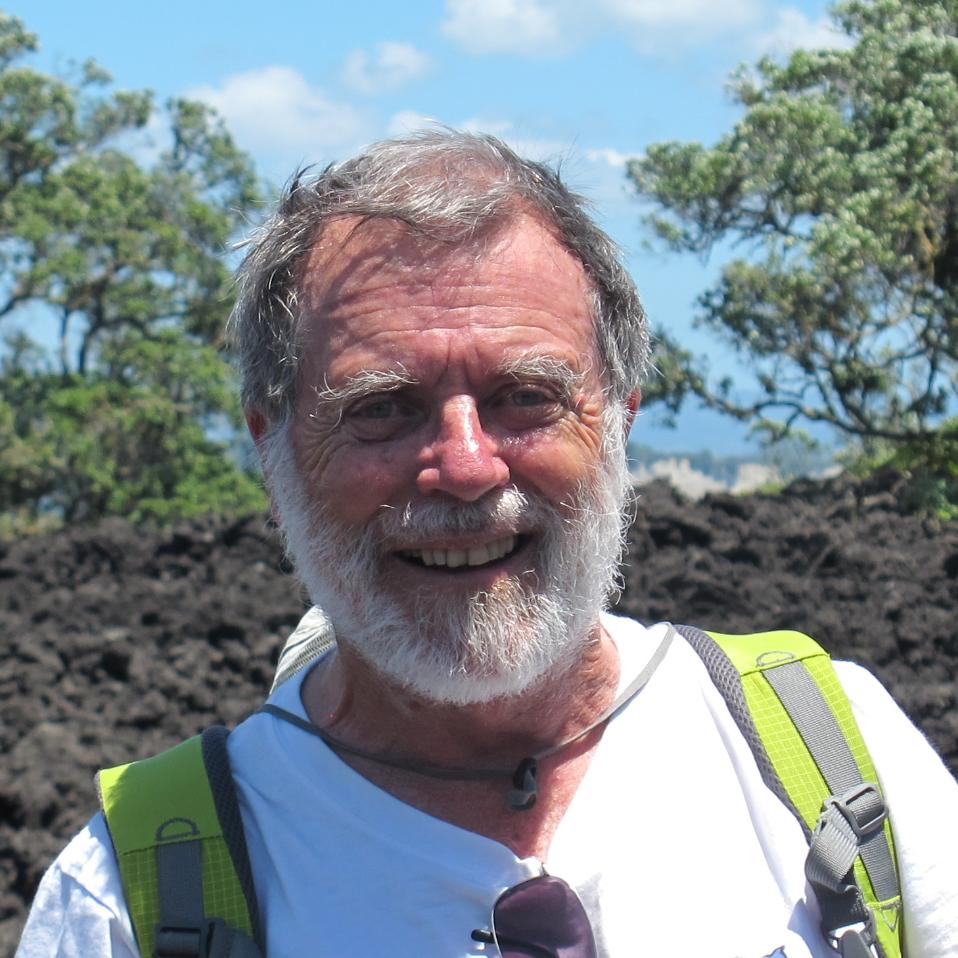
Peter Macinnis - online at: macinnis/writing
Last month the National Library of Australia released a brand new work by Fairlight Science writer extraordinaire Peter Macinnis - although 'inspire-er' may be more accurate. The book is 'Australian Backyard Earth Scientist' - the third in a series he has penned for the NLA, including one that won an Eve Pownall award in the 2010 Children's Book Council of Australia Awards for sister publication, Australian Backyard Explorer and a Whitley Award in 2012 for Australian Backyard Naturalist.
This highly illustrated latest 'Australian Backyard' book provides fascinating information that helps explain different aspects of earth science and provides answers to questions like: how old the earth is, what fossils tell us, how mountains were created, what causes earthquakes, what the difference between weather and climate is, why glaciers are melting and many more. The book also includes fun activities that children can try at home for example making fossils and using tree rings to find out about past weather.
The previous books in the series Australian Backyard Astronomy (by Ragbir Bhathal), Australian Backyard Naturalist and Australian Backyard Explorer have all been a popular addition to both school and home libraries for budding explorers and adventurers interested in their natural environment.
Peter is prolific, having penned over 50 books, and he's funny, really funny - an example from his pen;
Peter Macinnis turned to writing after his promising career as a chiaroscuro player was tragically cut short by a caravaggio crash during the Trompe L'Oeil endurance race. He recently did remarkably well in the early rounds of the celebrity underwater cooking program, Moister Chef, but he was disqualified for using dried fruits and desiccated coconut. He has a pet leech named Gladys, which has lived in a container on his desk for the last six months, as part of another book, and he is an expert echidna handler and ant lion wrangler. He wrote both the score and the libretto for the acclaimed opera Manon Troppo.
Sorry, that’s not quite right. I write and sometimes broadcast about science, for young and old. ... I write mainly about science, or consumer history for both adults and children, depending on how the fit takes me on a given morning. I usually have one book coming back after editing or in production, one being edited, one being written and one or more being actively researched.
Peter is a frequent visitor to our end of the peninsula - in fact he's been romping through the regions offshore for over 50 years now. This week a small insight into one of our local treasures who is disclosing a lot of other hidden treasures right here and right now - do yourself and your youngsters a favour - get these books!
Where and when were you born?
1944, in Queensland.
Where did you grow up?
I grew up in Balgowlah, just near Manly West Public school – I went to school there, and then I went to Manly Boys High.
Is that where you began exploring everything outdoors?
North Harbour was my ‘beat’ – I knew every nook and cranny if it; I knew where to find the stingrays, I knew where to find everything.
You also take this knowledge into schools?
This is through a CSIRO program, and these days is called ‘STEM Professionals in schools’, it was ‘Scientists in Schools’. STEM stands for ‘Science, Technology, Engineering and Mathematics’. I only do one school but I do it pretty thoroughly, and that’s Manly Vale Public School. I go there fairly regularly to do almost anything. As an example, on one occasion I was out with some kids in the bush just near the school. I had a vegemite jar half full of sand and a few of them looked at it wondering, ‘I wonder what that is for’.
I went off the track, plonked myself on a rock and said ‘I’m sitting on a 200 million year old fossil.’
Well, that had them, ‘where’s the fossil?’
Well, the fossil is the fossil sand bank; ‘oh’
So then I showed the vegemite sand jar; now when you tip dry sand it always forms a particular slope and this causes something called ‘cross bedding’. All around Sydney you can see cross bedding, it’s about 30 degrees in a slope. When you go down Sydney road towards Manly, that cutting or anywhere, just around the school at Manly Vale for example, there are all of these beds that are laid down on a 30 degree angle. These are old sandbanks that were washed along on all of the sands that were pushed along ran over and down on a slope and then got buried underneath everything else and so was kept there. So these are, in fact, a fossil sand bank.
Because they had the vegemite jar to play with they could see the whole thing happening. So I not only sit on fossils, I carry them around in my pocket.
Is this pursuit of sharing knowledge simply an extension of your childhood ‘boys own adventures’?
Absolutely. I had to make my own laughs when younger so what I’m trying to do is make sure other kids get a boost up.
How many books have you written?
Well, if you count translations, it’s something over 60, without those it’s over 50.
A lot of them are written specifically for children – why is it so important to you to connect children to what’s going on around them?
I like writing for children because it’s actually harder to write for them. When you’re writing for adults you will find they’re more forgiving and will fill in the gaps. With children you have to cross all of the ‘t’s and ‘I’s – or cross your eyes and dot the tease as the case may be!
It’s fun but it’s a challenge – and I know I’m lighting a fire that may not otherwise be lit.
The other part is that I’m known as someone who can write for children so I keep getting asked to do things.
The National Library made the terrible mistake of thinking oi was a Historian because I’d written a book about the early explorers. The book actually says that these people weren’t actually explorers as they were following tracks that the Australian aborigines had made through the bush for the most part anyhow, which they quite openly talk about…’we followed a native path for the next 300 miles…’ or along those lines. They also took Aborigines with them as well.
I was just picking up on those other aspects as a bushwalker I used to wonder, ‘how did this track get started?’ and more importantly, what kept it going – even in the wilderness the tracks are there because a few people are going through along that way each week and that’s enough to maintain them, to keep them there.
That’s when I decided I needed to look at it all a bit more closely and found all this stuff about aboriginal involvement. So I wrote a book about it called ‘Australia's Pioneers, Heroes & Fools’ which was for adults.
The National Library of Australia saw this and thought ‘here’s a chap who knows about explorers’ who has also written stuff for children, we’ll ask him to do a book about the History of Exploration.
That book was ‘Australian Backyard Explorer’. They decided we should have some science activities as part of that book and picked some stuff out and asked me ‘how will these go?’. I replied, ‘that one is illegal in two to three states in Australia, that one simply won’t work, that one is potentially lethal and not suitable for children.’
They said ‘what would you know?’ to which I said ‘I used to be a Science Teacher’ and referred them to one of my websites to have a look at the activities there, ‘that’s the sort of thing we should be doing’ and they said, ‘all right, you can write the activities then’.
That’s how I got my start with the National Library, writing ‘Australian Backyard Explorer’. I thought I was agreeing to write one chapter in a book, but no, it was the whole book.
You did so phenomenally well that they have just released ‘Australian Backyard Earth Scientist’?
This is the third in the series I've done. The second one was ‘Australian Backyard Naturalist’- this was about all the things you can find in the undergrowth around your backyard, and I use ‘backyard’ loosely because as far as I’m concerned the whole of North Head and Dobroyd Head are included in my backyard, as I go and play there a lot.
This is about how to find the things that are there when you don’t know they are there.
You are a grandfather now – has that inspired what you want to share and how to share it?
I have four official grandchildren now, who are blood relatives, and I claim another 500 grandchildren in the kids of Manly Vale Public school. I have much less work involved in getting to them. (Two of Peter’s blood relative grandchildren live in New Zealand, and two live in Manly Vale).
While on North Head, you do bushcare up there?
Yes. Originally we were trying to restore some of the army land so it could become bandicoot habitats. There was one section I was walking through with someone yesterday. The land there 12 years ago was this beautifully manicured lawn. Now it is wilderness that has resident water dragons, echidnas, bandicoots and quite a few other things as well. It has been supporting a lot of wildlife in the last six years since I’ve been there, so it doesn’t take long to get it back, once you start planting stuff.
There is more to bush regeneration than just planting stuff though; you have to take out the weeds. This is what we’ve concentrated on and by doing that you find this gives the bush a chance to just be itself.
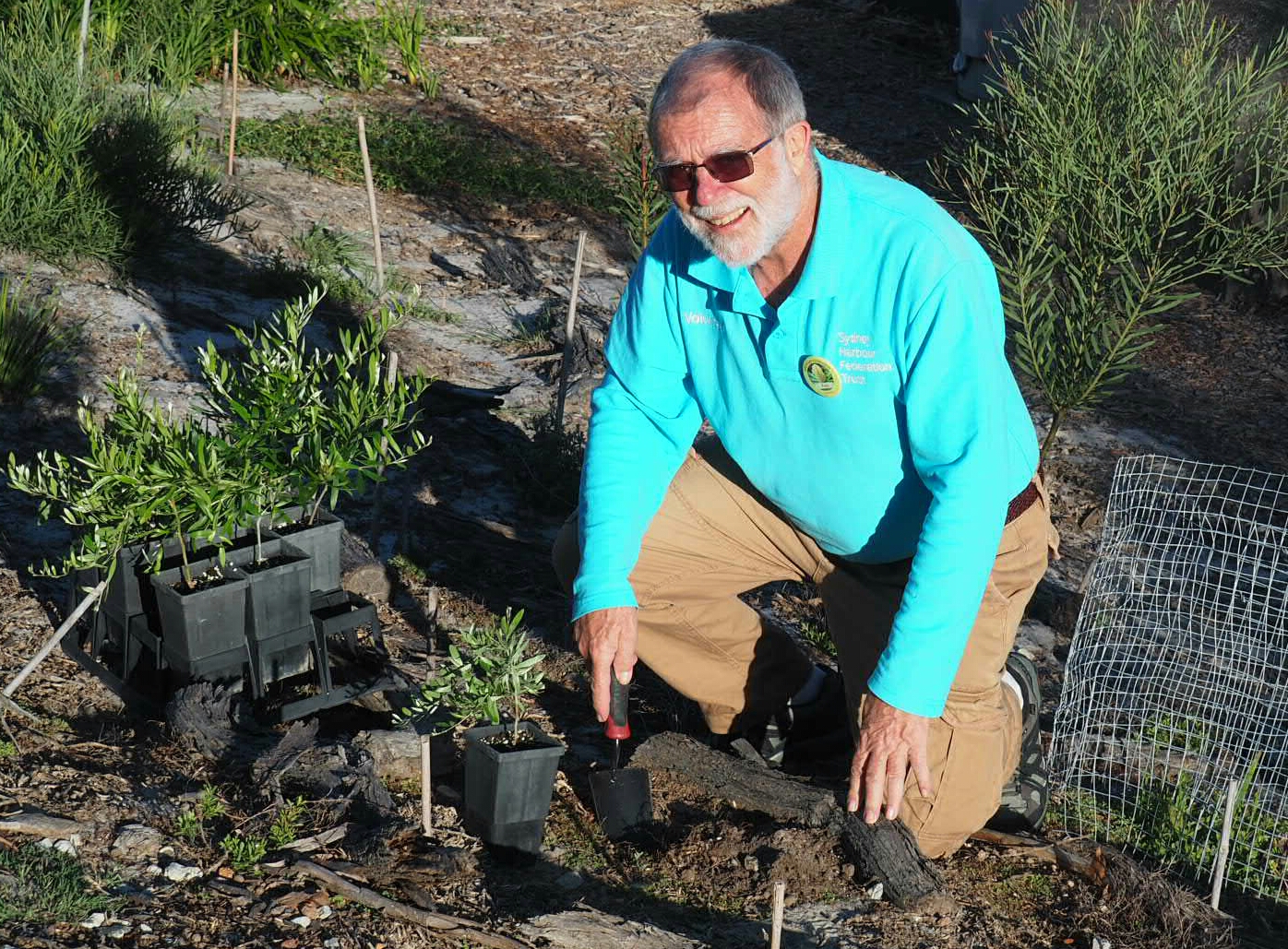
Peter - North Head Bushcare volunteer - Visit: www.northheadsanctuaryfoundation.org.au
Over 50 books written – if you had to nominate just three as your favourites, what would they be?
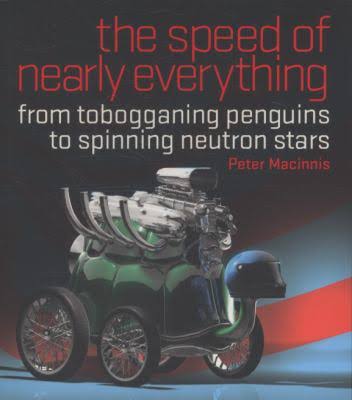 There was one little book I wrote for adults, and my Editor/Publisher there said ‘I want a book that people can read on the john in short little segments. This called ‘The Speed of Nearly Everything’. This was about how you find out the speed of a bullet, ‘how fast does a botfly fly?’ or whatever it may be – so this was just looking at the science behind this – and there was a lot of citizen science in that.
There was one little book I wrote for adults, and my Editor/Publisher there said ‘I want a book that people can read on the john in short little segments. This called ‘The Speed of Nearly Everything’. This was about how you find out the speed of a bullet, ‘how fast does a botfly fly?’ or whatever it may be – so this was just looking at the science behind this – and there was a lot of citizen science in that.
There was a social history, once again written for adults and through the same publisher, and that was ‘The Lawn: a Social History‘.
The lawn is an atrocious thing, we should never have had lawns. Grass is not too bad, it has its place, but with lawns you are kept a subservient slave and it itself is not allowed to be anything else – its kept trampled down, nothing else is allowed to be in there – it’s a monoculture.
What is 'Sheep May Safely Craze' then?
That’s my attempt at a novel, self-published as an e-book and as a print on demand paperback
This is about these beings from another dimension. They manifest themselves in sheep. Only a very few people can see them, very intelligent people can…and swagmen.
They wear Viking helmets so the swagmen will mistake them for mad cows and not eat them. They have their enemies however – the rats – the rates are doing nasty things. They have to solve a challenge, which a sort of quest the rats have sent them on, the rats are a fairly malicious bunch – and this quest is in some case is mathematical and in other cases has literary references.
The two human protagonists are Eric Blair and Alice Liddell. Now, unless you stop and think about it, Eric Blair is the original name of George Orwell, and Alice Liddell is the little girl that who Carroll based ‘Through the Looking Glass’ on. All the way through there are references to Carroll’s work and to Orwell’s work – although this is done fairly quietly. I’m hoping eventually there will one day be a fan base that will go through and write articles about all the references I’ve snuck in there.
So far it’s not doing very well at all though.
And the third book if you had to limit it to three?
Probably Australian Backyard Naturalist. This has in it many of the things I care about the most – giving kids the idea of going out and putting an umbrella under a bush and giving the bush a jolly good shake and looking at the things that fall off the bush into the umbrella.
That’s empowering.
Where does the inspiration come from originally – were your parents interested in sharing science insights?
Oh no, my parents didn’t do that – they did give me books though.
The influence was mostly a lady called Ada Jackson. She wrote as AJAX, she was a Western Australian and did a lot of work for the ABC back in the 1930’s and into the 1940’s. She wrote a book called ‘Beetles Ahoy’, a very old-fashioned sort of book about a bearded professor who moved in next door to two children and how he showed them things. I don’t go much for dead white males imparting all the knowledge, but that was how it was done back then; he had to be a professor! It was 8 and sixpence in all stores.
Australian Backyard Naturalist has all sorts of interesting things like antlions (which I discovered in ‘Beetles Ahoy!’) which will dig pits to trap other ants. If you watch them closely enough you will also see them trapping things like weevils; they’re not purely ant eaters, they will eat anything that falls into their little pits.
But this all comes back to my vegemite jar of sand because the angle in the slope of the pit is that exact 30 degrees that you will also find in a sandbank and crossbedding or in any other sand dune. So it all comes together – it is all part of the same story.
You have gone further than this though – on your website is a section ‘Advice to Young Writers’ – what comes first there?
Start by lighting a fire inside yourself.
That’s the beginning point. Once you have got that fire, then do something with it.
Australian Backyard Earth Scientist, the third in this series from the National Library – what is the focus in this edition?
The crux of this third book is to introduce people to an area that is widely misunderstood. I’m very much one who understands climate change – I worked for the Australian Museum back in the 1990’s, in 2002 I was working as a journalist at the American Geophysical Union conference in Washington D.C., and I met all these people who were climate scientists. So, apart from the evidence I gathered from tidal rises, I’m very much convinced.
There is a picture in the book which shows a high tide flooding across the lawn at the botanic gardens. Now, a certain local member who shall remain nameless, has said he has looked at local history pictures and there is no evidence of climate change.
I know what a King Tide was like 60 years ago when I was a boy and I can see what it is like today – and it’s 22 centimetres higher.
When my little granddaughters are old ladies at the end of this century, it’s going to be between 44 and 88 centimetres higher still.
That means serious damage to infrastructure.
So this book is about getting people to understand what climate is about.
Originally the book was going to be called 'Australian Backyard Geologist' but the National Library said they wanted to get a lot of climate information in there. I said that’s fine but you can’t call it ‘Geologist’ it will have to be ‘scientist’ – which they liked. So the title was changed and the format already worked out stayed.
This was where we introduced the earth, and how it works, and how the systems come together.
Photo: King Tide - Botanical Gardens in flood, January 4th, 2018 – Peter Macinnis photo.
This is another great book for young and old really, lots of ‘experiments’ and projects to try out too. Will there be a 4th in the series Peter?
Well, I was alive during World War II you know and by now my hands are beginning to get arthritic. When you have arthritic hands, they tend to hit the wrong key (on typewriter/computer) – so there’s a lot of work involved in going through and getting the typos fixed.
I do have about four books I want to get finished, mostly done – but at each instance I keep saying ‘this is my last book’ and then suddenly, out of nowhere, comes an idea for another one.
Being born in 1944, doing Bushcare, writing books, visiting schools – where does all the energy come from?
I have the heart of a small boy...pickled in alcohol in a jar on my…no, don’t use that, it’s a very old joke and not a good one.
While I’m going I plan to keep doing all I can – I may slow down a bit but I’m going to keep doing all I can.
And perhaps request a helper for future works who can transcribe while you dictate?
Oh yes, an amanuensis. Maybe, but who’d put up with me?
There is a book I would love to do; I gave a talk on New Zealand radio about 10 years ago about my Lawn: a Social History. A lady wrote to me via email saying, ‘look, I’m a certified lunatic but I’m certified as cured and I had this idea that you should do a 'Social History of Fences’.
Initially I thought ‘that’s a bloody stupid idea’ – but then I thought about it again and thought ‘it’s got legs’. For last several years I’ve been collecting stuff about walls and barriers – this Trump thing about a Mexican wall – perhaps it’s time has come.
Trouble with that though, by the time I get it written he’ll be gone.
More honestly, the history of walls is fascinating – the changes that occurred when cannons were brought in for instance – the walls in Istanbul would never have stood up to cannons. Because there were cannons people decided ‘bugger it, we won’t live inside the walls of a city, we’ll just live where we are and deal with it in other ways’.
And then there’s the Berlin Wall of course, which I skipped along in 2002, when all that was left was a little line along the road. The whole group skipped along that in unison because we figured that was no better way to treat something that represents that horror was to skip along it and treat it as an object of fun.
A whole lot of Berliners pointed at us and laughed and thought that was brilliant.
On Scientists, who are your favourite scientists?
J B S Haldane (John Burdon Sanderson Haldane FRS). He found it very difficult to get permission to use human subjects for tests he was running during war time, so he used himself instead. So to find out if gasmasks worked for instance, he’d put on one and then go into a gas chamber and see if he survived.
He then got bowel cancer and wrote a poem about that …
It begins:
I wish I had the voice of Homer
To sing of rectal carcinoma,
Which kills a lot more chaps, in fact,
Than were bumped off when Troy was sacked…
And it goes on for ages: readers can find it on the Web
Do you remember Professor Julius Sumner Miller? We’d get home from school and this emphatic Einstein looking character with long white hair sticking out everywhere would be bellowing ‘why is this so?!’ at us…
Oh Yes. My newest book, which I’m trying to place with a publisher at present, is inspired by Julius Sumner Miller. In 1962 I was working on honi Soit and Laurie Oakes was the Editor then. He said to me, ‘look here, you’re a science student – I’ve got this brand new thing, it’s called a tape recorder, it’s battery powered and we can get 20 minutes on it. I want to go out and interview Julius Sumner Miller, come along and help me.
We went out to Mascot, where he was and which in those days was much less secure, and he said ‘I can give you two minutes’. Twenty minutes later, when the tape ran out, he was still going.
I hadn’t told Laurie, but I’d just decided to change over to the Arts Faculty and came out of that thinking ‘even if I become an Arts Graduate I still want to be someone who has kept their sense of wonder.
That’s probably what makes me run still – I have a sense of wonder and I want to share that’s sense of wonder.
What are your favourite places in Pittwater and why?
West Head is very much part of my beat. Why; because I did work there as what was called a Seasonal Ranger about 50 years ago. I know a more about the engravings up there than most people and I like going to them, my wife likes going to them too. We keep finding things like lightning strikes on sandstone. One of them sadly was right on top of an initiation site.
We head out there quite often; we know where to find the waratahs, we know where other plants flower – if visitors come from overseas we take them out there because it’s just a marvellous area.
We have friends that live at Palm Beach so they tend to get us involved in bush walks – we take ferries across and charge up through the rough tracks and then rumble down another cliff somewhere and get on another ferry to come back across again.
A Seasonal Ranger – how did that begin?
That was through National Parks & Wildlife. They used to hire young graduates during the Christmas holiday period to do extra work. I did things like popping out in a landrover and going round the various picnic sites and saying ‘I’ll be starting a tour of engraving sites at 2 o’clock at this point, if you’d like to tag along, feel free to do so.’
I’d always save the last two or three best sites for last.
I’d take people out and show them the bush, maybe show them the animals, how to find tracks – it was just introducing people to the bush, very much in the way my scout leaders did when I was a kid.
Which university did you attend?
Sydney. I ended up with a double major in Botany and Zoology but did quite a wide range of stuff; Political Science, Philosophy, Psychology, General and Pure Mathematics just for the hell of it, Physics, Chemistry, Geology, Indonesian and Malayan Studies – and a few others as well.
I had a scheme at one stage where I wanted to be a Pre and Post Islamic Medieval Javanese Historian.
Goodness – what inspired that?
Around 1300 or so Islam came into Java, so the period before and after that is a very interesting one in Javanese history. I thought it would be rather nice to make that my life’s study. Unfortunately, while I had some money set aside to go and work there for a few years, and do studies there and pick up on the languages I needed, there was a coup in Indonesia in 1965. I thought all the people I knew in the embassy were rather left wing, I suspected they might be communists, and thought if I go over there and are seen to be associating with them, I might get my head chopped off.
At that stage I redid my plans and did a Biology Degree instead, as one does
What did you do when you left school?
I gave three cheers for getting away from the boringness.
It’s a funny thing – about 8 years after I left I ended up back at Manly Boys High as a student teacher. My old history teacher, Oz Worboys, saw me in the corridor – he pointed at me, he laughed like a dragon and said ‘it serves you right!’ – but then he said, ‘I tell you Macinnis, you will be a very good teacher because whatever they try, you’ve already done it ten times better than they ever could’.
I think he knew more about the exploits I pulled off than my fellow students did – and I will not confirm or deny anything!
But I was a right little terror – and I did have some right little terrors as students, so of course I would always forgive them. Having done so I then could show them how I had defeated them.
You have spent your whole life in this area – what’s the best part about being here that long?
I have to make one confession – I was born in Queensland; I escaped when I was six months old, disguised as a Gladstone bag.
The fact of the matter was it was war time, my father was in the Air Force, so I flew down on a Catalina. The problem was there was a limited number of passengers they were allowed to have on the Catalina, so an Air Vice Commodore who was travelling on the same plane said ‘look, put him down as a Gladstone bag, of that (his) weight’. So I travelled as a Gladstone bag and repaid his kindness by vomiting all over him.
That was the first hint of my anarchist tendencies.
But I arrived here at the age of six months and have been here ever since.
It’s just home – it smells right, looks right. I’m sitting here in Fairlight and looking out, I can see as far as Collaroy Plateau – it’s just my area. I can go down to North Harbour and still know what the tides are doing; I know where the soldier crabs ought to be if the old tributyl tin they used on yachts 20 years ago hadn’t killed them all – I do hope they come back one day.
What is your ‘motto for life’ or a favourite phrase you try to live by?
Scribo ergo sum.
Could you translate that for those of us not fluent in Latin?
I can indeed, and should share on that note that one of my hobbies is speaking Latin to telephone desks/sales callers.
I say things like Mater tua caligas gerit – which is Latin for ‘your mother wears army boots’ – or I might say ’Quis custodiet ipsos cuspidors?’ which is you know your Latin you know it should be ‘custodes;’ or even custard – it just throws them for a complete loop.
I used to use Indonesian but I thought sooner or later I’m going to get someone calling who actually does speak Indonesian and my Indonesian is fairly rusty, and I’ll get caught out, so I’ll use Latin instead. When you get people trying to sell you tablecloths from Sri Lanka, you just speak Latin to them and they look at you then walk away.
Scribo ergo sum is ‘I write therefore I am’.
Australian Backyard Earth Scientist
By Peter Macinnis
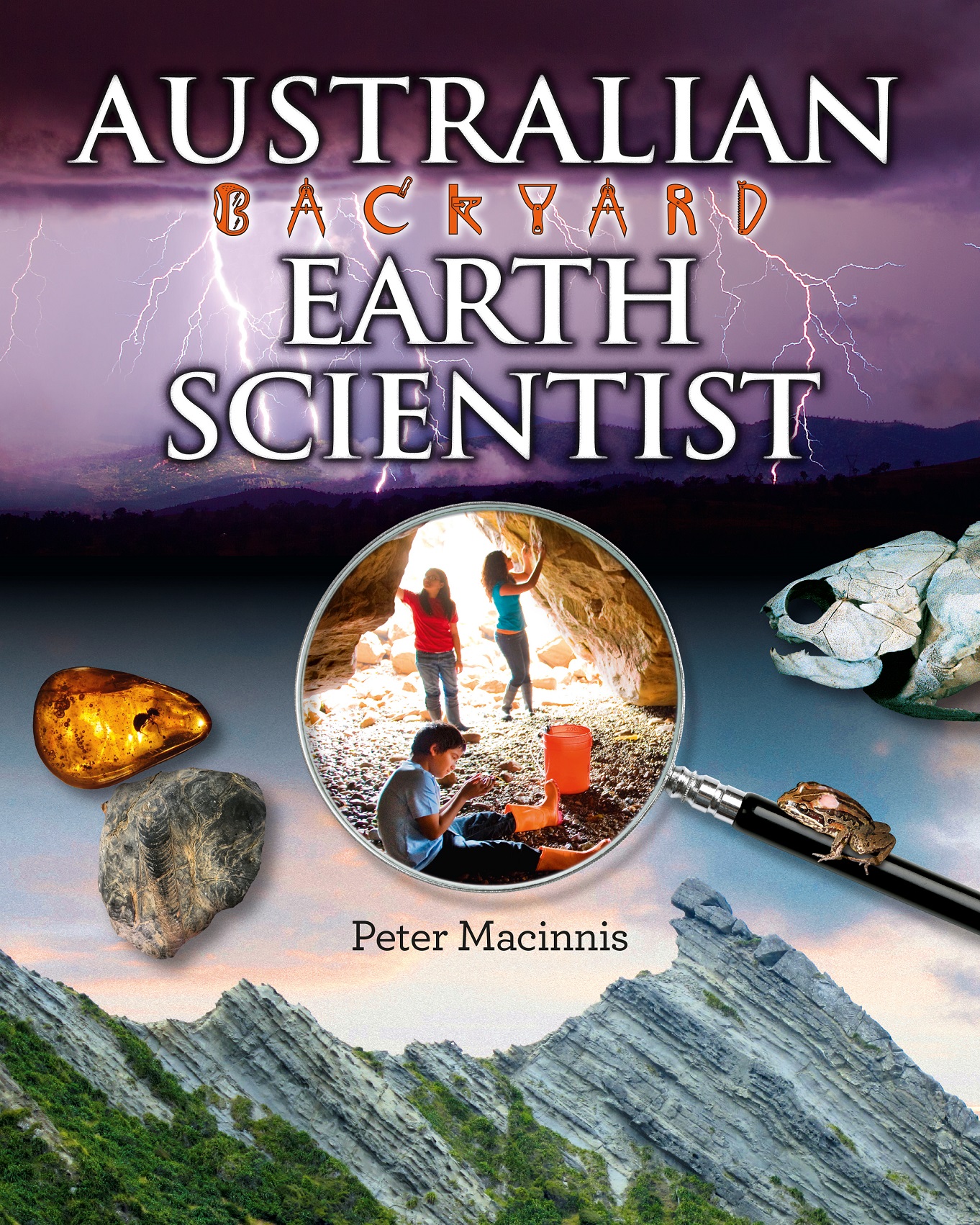
Find out where rain comes from and what geysers look like! Read about soil becoming too salty and why greenhouse gases are increasing. Did you know that fog is a cloud sitting on the ground and that ice can tell you about the environment of millions of years ago? And what is lightning anyway?
Australian Backyard Earth Scientist is full of fantastic photos and fascinating information that help explain different aspects of earth science—a science that discovered how old the Earth is, what fossils tell us, how mountains were created, what causes earthquakes, what the difference between weather and climate is, and why glaciers are melting.
These questions and many more are answered in Australian Backyard Earth Scientist. There are projects, as well, that you can do at home—like making your own fossils, collecting cloud types, and using tree rings to find out about past weather.
Older readers will enjoy more detailed explanations and links to extra information in an extensive References section.
Australian Backyard Earth Scientist is an absorbing resource for both homes and classrooms. A thematic approach makes it easy for young readers to discover the influences that have fashioned our earth—and are still acting to change it. From the beginnings of the planet through to climate change and today’s concerns about rapid transformation, interesting and fun facts and projects help develop an understanding and appreciation.
Points of Interest
• Contains simple explanations of natural events to assist young readers understand earthquakes, tsunamis, volcanic eruptions and tornadoes they hear about on news broadcasts.
• Step-by-step projects encourage children to discover for themselves how our earth has changed over time.
• ‘A Closer Look’ sections add detail to subjects such soil erosion, volcanoes, the composition of water and volcanoes.
About the author
Peter Macinnis is a Sydney-based science and history writer. His many awards include the 2010 Children’s Book Council of Australia Eve Pownall Winner for Australian Backyard Explorer, and the 2012 Whitley Award, Young Naturalist category, from the Royal Zoological Society of NSW and the 2013 WA Premier’s Book Awards, Children’s Literature (joint winner) for Australian Backyard Naturalist. For The Big Book of Australian History, Peter received a Notable Book award in the 2014 Children’s Book Council of Australia Book of the Year Awards. The revised third edition of this book was published in 2017.
Published February 2019 - Available now: $29.99 - purchase online
Also available:
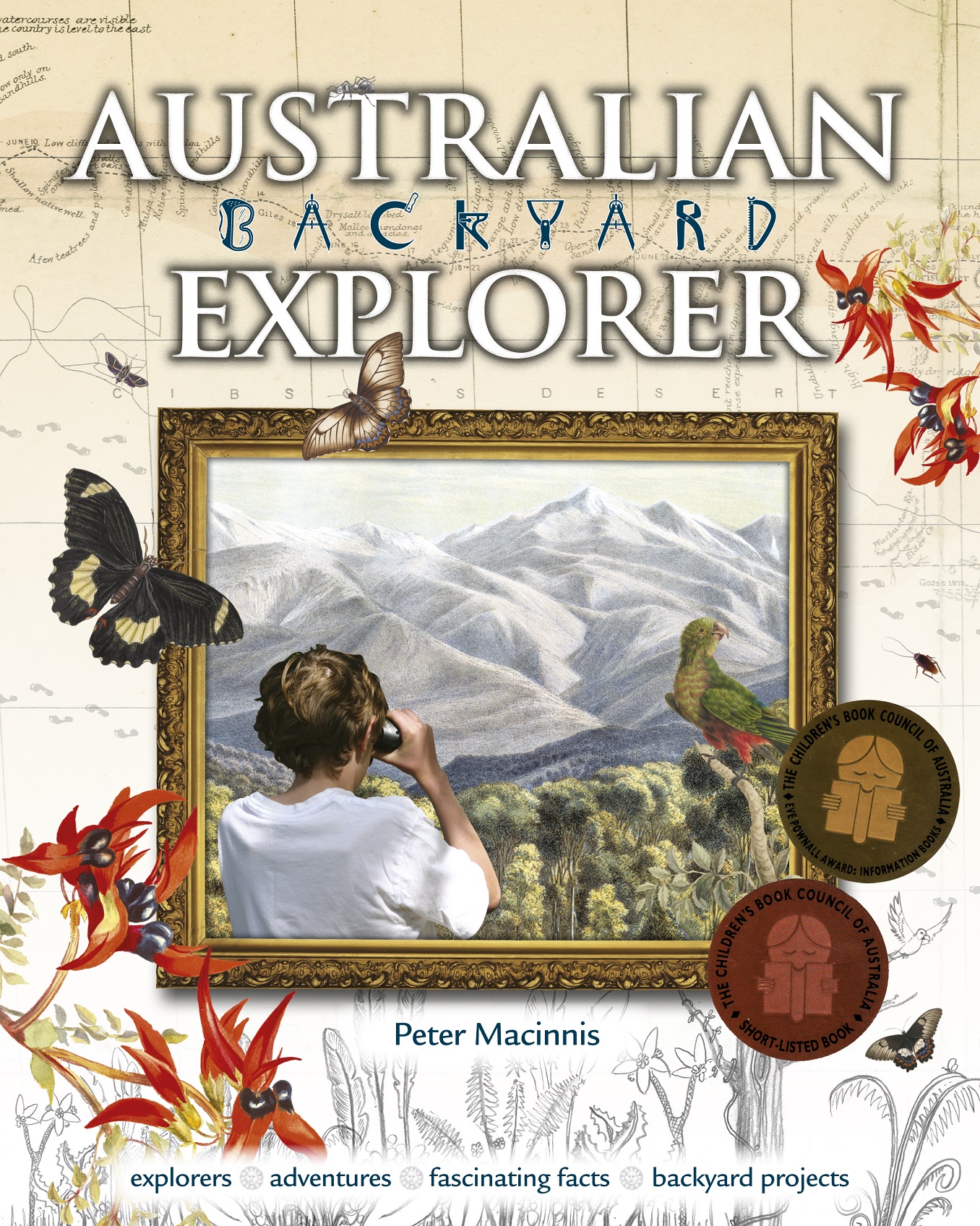
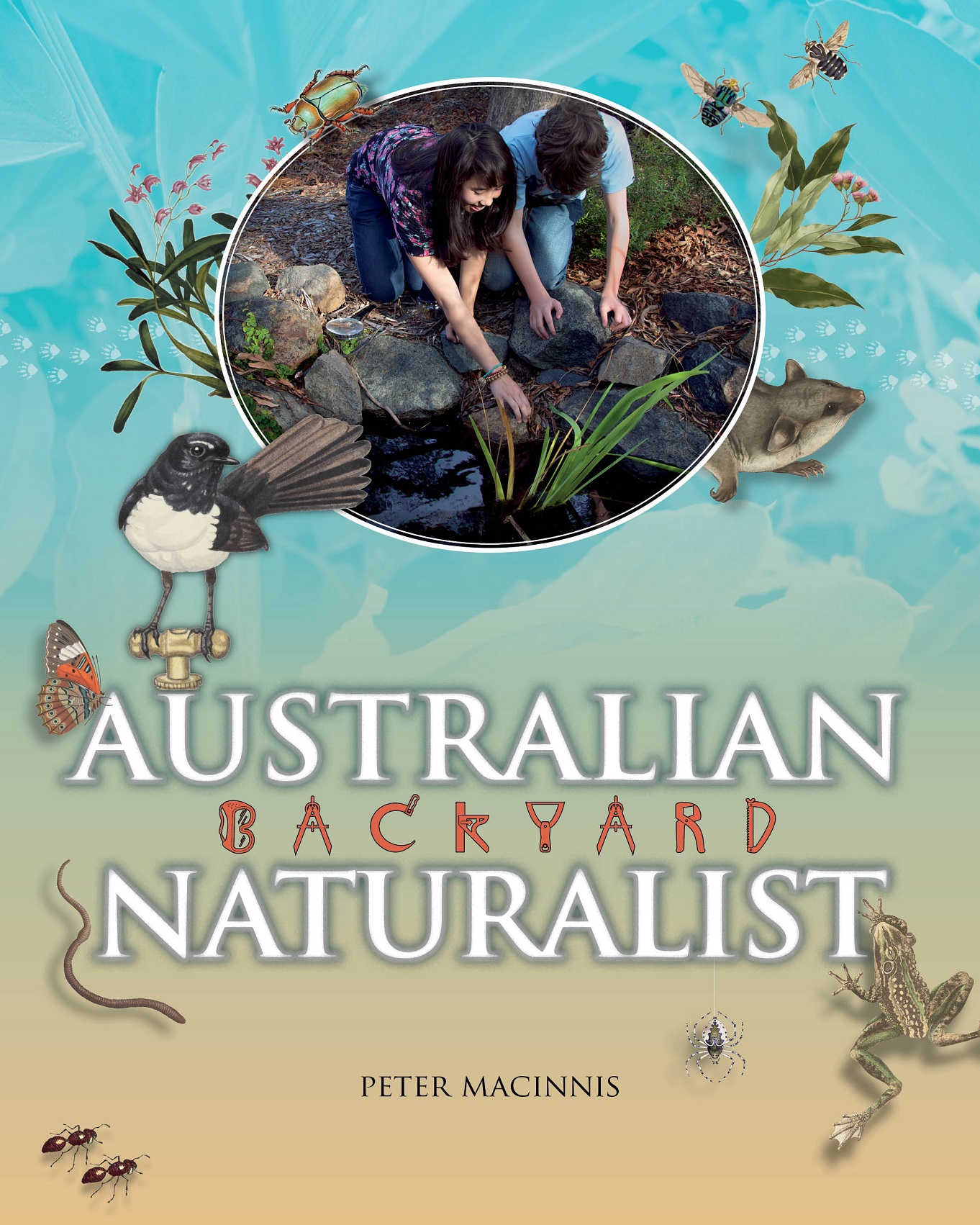
The Author at work!
About Peter Macinnis
This is me. I write books for adults and children, and sometimes, I even win awards.
I also talk on the radio sometimes and sometimes I do a bit of magazine work. Journalists, you can find me on Facebook and Google+, though I only confirm friendship with people I know. Check out how to get my email address at the end of this page, but read carefully!I am also a Goodreads author, which means you can find out what I am reading. BE WARNED: to be my Goodreads friend, you need to pass a fiendish test first, and even then, I am careful not to gather those who are just out to get "scalps". If you have 900 other friends, forget it, but if you are a keen reader and can't crack the test, track me down! On Twitter, Flickr and the like, I use the handle McManly, and maybe in other places as well. It was a nickname that I acquired some years ago, and related more to where I live than anything else. If you want to know what I am up to, read my blog. My travel blog is at http://mcmanly.livejournal.com/.
I am usually hairy, windblown and slightly dishevelled. I have a beard because it saves time otherwise spent standing in front of a mirror, and I trim it with scissors when it gets annoying. I get my hair cut when I happen to see the barber open as I walk by, or when it really annoys me. I prefer to dress casually and read seriously, rather than the other way around. The sort of people I want to impress do not care that much what clothes I wear, and if they did care, I wouldn't want to impress them. Basically, ideas interest me more than shopping or clothes.
Given the choice, I would sooner be outdoors somewhere, preferably away from large numbers of people, listening to good music, and either reading a good book, or planning some writing task of my own, or wandering along, poking my nose up a creek, looking under stones, and generally annoying the wild life or worrying the rocks. That said, I also enjoy being indoors, fossicking for facts on the Web. I have a curious mind (my detractors and friends all say that, though with different intonations), but more of that later.
My real passion in life is science, any sort of science — in the photo seen here, I was out looking at some interesting geology near Wilpena Pound in South Australia. But any sort of science or technology gets my immediate attention, and that is why I mainly write about science-related topics. (Note: this pic is about three years old now. It's not vanity, I just don't have any other shots that please me.)
Christine (hereafter referred to as Chris) and I were married in 1969, and she has put up with me ever since. We have three children, one a solicitor (that's a lawyer, if you are American), one is an Associate Professor in ecology, one a biotechnology Ph.D., whose work was on yeasts and who now handles industry and community engagement in the Faculty of Medicine at the University of Sydney. We both used to be science teachers, though I also taught computing.
I grew up not far from where I now live, on Sydney's northern beaches. I went to school near here, and then took seven years to get a degree, but I picked up an excellent education, and saw into the dark heart of a giant bureaucracy, the Commonwealth Public Service. I spent two years in Treasury and one in the Commonwealth Office of Education, mainly doing the hack work needed to keep overseas scholarship students happy. The Treasury work was interesting, and I learned a great deal about computerised accounting. The work with the overseas students was satisfying, though we were under the thumb of a vile piece of work, one Doug 'Udson, who had to point out that 'is name was spelt with a haitch (I think he inspired those famous timberyard ads). He was an evil despot who harmed many people, but he never managed to get me. I learned the art of ducking.
After I graduated, I was sort of headed towards biological research, but drifted into teaching which I greatly enjoyed. One of my ex-teachers saw me when I was a student, and he guffawed. Pointing at me and choking with mirth, he declared that putting me in front of a class would serve me right. Then he straightened himself up and offered the view that I would succeed in teaching, because whatever the kids tried, I would already have done it. He was right too, which is odd, because nobody knew half of the things that I was behind. My school days were days of misplaced ingenuity, used against the more pompous teachers, and I never got caught. He wasn't ever one of my targets: join the dots.
I taught science for four years at Fort Street, where the students were ingenious little devils like me, and then at Ashfield for two years, where I became a more-rounded teacher. That is to say, I put on weight because I stopped smoking.
Then I drifted into "Head Office" where I did not want to be, and became a sort of boffin, so to keep myself honest, I got involved in writing teaching materials, and that took me to writing textbooks. Along the way, I took ten years to get a Master's in Education, so if you want to talk about using Bayesian probability in computerised tailored mastery testing, I'm your man! One of my findings was so outrageously counter-intuitive that the examiner was about to fail me. Then he thought nobody would be stupid enough to say that unless it was right, so he checked, and I passed. (By the way, if the time I took seems questionable, I was always excellent at the use of by-laws, thanks to a grounding given to me in early 1964 by future High Court judge and all-round good chap, Michael Kirby. Two degrees, seventeen years, and all of it legal!)
Then I found a case of fraud in science while I was working on an idea for a book. That led to me starting to do radio work when I was invited to do a talk on it, and things progressed from there. I found myself promoted to Principal Education Officer without once brown-nosing, but that was unusual, and I knew there was no future advancement for me there if I gave honest and fearless advice, as is my tendency. It was a potential dead end, and aside from that, I had no wish to climb the greasy pole. I wanted to write.
So from there, I moved to the Powerhouse Museum, but the excellent people I went there to work for moved on, and were replaced by disastrously second-rate people, complete duds, as anybody who was there at the time can tell you. Still, I suppose the new people gave me a good model of bad management which stood me in good stead when I was head-hunted into a management consultancy. Still, that was no way for a science-loving story-teller to make a living, because one was expected to be polite to clients and tell them all their ideas were brilliant. I left after a couple of years to do some serious writing, and somehow ended up at the Australian Museum for several years.
I then got back into teaching in the classroom in 1994, but by mid-1999, there was administrative leprosy about (another stupid mismanager, who had replaced the boss I had gone there to work with). Basically, I'm an aging info-hippie, with laid-back ways that get up the noses of self-important nobodies. I had left the Department of Education, because all I could see ahead of me was a procession of clashes with fools. I left the Powerhouse for much the same reason, and now, once again, I found myself confronting a very small mind indeed.
I had already had an invitation from elsewhere, so I left to join an online encyclopaedia company in Brookvale as a science writer. My day job mainly involved writing on science, technology and mathematics, but I also worked on other innovative projects — and when I got home, I wrote other things. Now I just write what interests me, but I tend to chase the odd interesting thing wherever it leads. The day job fell apart when a couple of slick operators took over the company and shafted all the staff. I grabbed up my pensions and switched to writing full-time, and life has been remarkably pleasant. I choose my publishers with care, and don't have to be polite to people who don't deserve it. Oddly, given my overtly superior attitude, I am polite to most people, because I find that they warrant it. I simply don't appreciate incompetents trying to tell me how to do my job. or making use of me in petty little power games.
I have a rule for choosing to respect people: I will respect any person who knows more than I do about any subject that interests me. Because I have a curious mind, there are few things that don't interest me, so most people merit my respect. If your only expertise is in 19th century shovel design, it's just possible that I will avoid you at any second prospect of an encounter. On the other hand, if you know about wear patterns in those same shovels, I may well seek you out, because there may be something there for me that relates to the wear patterns on Neolithic flint sickles. And even if I can find no ground to respect you, I won't treat you with contempt unless you try to push me around. Many have tried, none has succeeded.
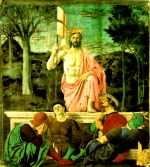
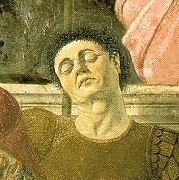 On the other hand, offer me a new idea, and I will be your friend for life. Demonstrate wit or ingenuity, show me a new phenomenon, a new connection, something which makes me take notice. That's all I ask.
On the other hand, offer me a new idea, and I will be your friend for life. Demonstrate wit or ingenuity, show me a new phenomenon, a new connection, something which makes me take notice. That's all I ask.
This is because the habit of chasing inter-connected ideas has stayed with me. So when you read what I have to say about goitre, for example, you will also be able to see the painting which appears as a thumbnail on the left, Resurrection, by Piero della Francesca, in which Piero is one of the sleeping guards (you can see him here on the right), something we know because the guard, like Piero, had a goitre (that's the lump beneath his chin).
My books are full of stuff like that, the little-considered byways that were probably crucial at some point in the past. If I dealt with that Piero painting, I might go on to how iodine was discovered as a result of shortages of gunpowder in Napoleon's France, and the meaning of "cretin", and what that has to do with goitre. Some reviewers, the ones with short attention spans, don't like this style, but they are probably the sort of people who think I should wear a suit.
I have recently been told that the saying I learned at my mother's knee (or some other low joint) does not actually talk about "gladly making fools suffer", but I'm too set in my ways now.
________________________________________
The above has been retrieved from Peter's webpage at: http://members.ozemail.com.au/~macinnis/writing/about.htm
Peter Macinnis - at glacier Tracy Arm, Alaska